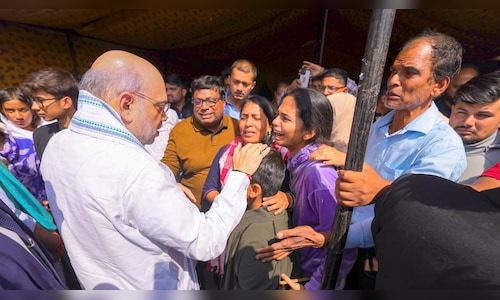The attack, executed with alarming precision, highlighted the ongoing threat of cross-border terrorism, a challenge that India has faced for decades. However, India’s response was unprecedented in its scope and ambition, marking a significant shift in its strategic approach. Within days, the Cabinet Committee on Security, led by Prime Minister Narendra Modi, declared a series of retaliatory measures: suspending the Indus Waters Treaty (IWT), closing the Attari-Wagah border, expelling Pakistani diplomats, downsizing high commissions, and denying Pakistani nationals SAARC visa exemptions. These actions, labeled as a “multidimensional” response, were more than reactive; they were a calculated assertion of India’s escalatory credibility.
The suspension of the IWT, a 1960 agreement facilitated by the World Bank that allocates 80% of the Indus River system’s waters to Pakistan, was especially significant. By utilizing its status as the upper riparian state, India conveyed a clear message: it could leverage geographic and resource advantages to impose consequences on adversaries. The diplomatic and economic measures—border closures, visa limitations, and personnel expulsions—further isolated Pakistan, intensifying its global condemnation after remarks from the US, Russia, and other powers.
This response signifies a departure from India’s traditionally restrained approach, previously evident in the surgical strikes following Uri (2016) or the airstrikes after Pulwama (2019), transitioning to a broader, non-kinetic strategy that redefines deterrence. Beyond Pakistan, India’s actions carry regional implications, subtly warning Bangladesh as the Ganges Water Treaty approaches its 2026 renewal.
Strategic Signaling Through Treaty Suspension
The suspension of the IWT until Pakistan takes credible actions against terrorism is a brilliant maneuver in strategic signaling, merging psychological warfare with tangible economic pressure. The treaty, established in 1960, is foundational to India-Pakistan relations, governing the usage of the Indus River system, which supports 65% of Pakistan’s agriculture and meets its energy needs via hydropower.
Pakistan is heavily dependent on the three western rivers—Indus, Jhelum, and Chenab—allocated to it under the treaty, while India oversees the eastern rivers—Ravi, Beas, and Sutlej. The suspension does not immediately cease water flows but introduces uncertainty, a powerful instrument in geopolitical strategy. This action emphasizes India’s readiness to escalate beyond conventional military or diplomatic responses, asserting that ongoing support for terrorism will incur significant costs.
Moreover, this is a calculated escalation, avoiding outright abrogation, which could provoke international backlash. Pakistan’s agriculture, already challenged by climate change and mismanagement, now faces the threat of diminished water security, risking food production and heightening domestic unrest. The World Bank, a backer of the IWT, has voiced concerns, but India’s rationale of national security and the treaty’s Article XII (allowing modifications under exceptional circumstances) provides robust legal justification.
This audacious move not only applies pressure on Pakistan but also sets a precedent for India to utilize resource diplomacy as a method of coercion, reshaping the engagement rules in South Asia. It indicates to adversaries that India’s patience is finite and that it can harness its geographic advantages in ways that extend beyond traditional battlegrounds.
Diplomatic Isolation of Pakistan
India’s diplomatic campaign following Pahalgam aims to isolate Pakistan on the international front, increasing the repercussions of its alleged support for terrorism. The closure of the Attari-Wagah border, a symbolically and practically significant link between the two nations, halts trade and cultural exchanges, including the famous flag-lowering ceremony that attracts thousands of visitors. Coupled with the expulsion of Pakistani defense officials and the reduction of high commissions from 55 to 30 staff members, this significantly limits diplomatic communications. The revocation of SAARC visa exemptions for Pakistani citizens and the issuance of 48-hour exit orders further restrict personal interactions, effectively freezing bilateral relations.
These actions are not merely symbolic; they seek to deepen Pakistan’s status as a pariah. The global outcry following the attack, with remarks from the US, Russia, and even China urging Pakistan to combat terrorism, grants India diplomatic leverage. By portraying Pakistan as a state complicit in terrorism, India has secured international support, in contrast to previous incidents when global reactions were muted. The suspension of SAARC privileges also diminishes Pakistan’s regional influence, as SAARC represents a crucial platform for South Asian collaboration. This diplomatic offensive underscores India’s aim to impose long-term costs, compelling Pakistan to reckon with the repercussions of its asymmetric warfare strategy.
Latent Threat of Military Retaliation
While India’s diplomatic and economic initiatives convey a powerful message, military retaliation remains a possibility. India’s response to Pahalgam has been non-kinetic, focusing on diplomacy, trade, and resource leverage, yet this does not exclude future military involvement. India’s history of calculated military actions—such as the surgical strikes following Uri (2016) and the Balakot airstrikes following Pulwama (2019)—demonstrates its readiness for precise, escalatory operations. The Pahalgam attack, given its significant civilian toll and boldness, might trigger covert or overt military responses if Pakistan fails to mitigate terrorism. India’s military upgrades, including advanced border surveillance and drone capabilities, position it to implement targeted strikes with minimized escalation risks.
Domestic political considerations for the Modi government, backed by a robust nationalist base, further suggest that military action remains a plausible route to reinforce deterrence. Although the current response emphasizes long-term pressure, the Indian Army’s heightened alert status along the Line of Control indicates readiness. This underlying threat ensures that Pakistan cannot misconstrue India’s restraint as a sign of weakness, maintaining escalatory pressure across multiple fronts.
— The author, Prof. Sayantan Ghosh (@sayantan_gh), is a political observer and columnist who teaches journalism at St. Xavier’s College, Kolkata. The views expressed are personal.
Read his previous articles here



